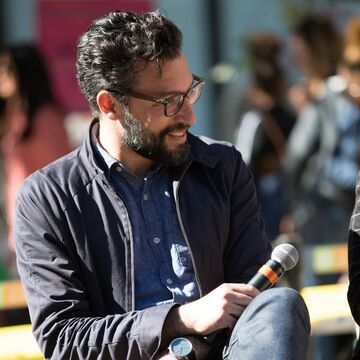

F. Philip Barash
Full-Time Visiting Faculty
Contact
Bio
Full-time visiting faculty, Historic Preservation department. Publications: “One More Day in the Life of Jason Pickleman,” Newcity Chicago EXPO Guide, 2024. “To Find Solutions for Chicago’s Ills, Look to Our Communities,” Crain’s Chicago Business, 2024. “Not Your Granny’s Granny Flat,” Chicago Architect, 2023. “Restoring the Alexander Girard Home,” Santa Fe Reporter, 2022. “State vs. Jahn: the Thompson Center is Dead, Long Live the Thompson Center,” Newcity, 2021. “Into Detroit’s Backwater,” Landscape Architecture Magazine, 2019. "Designing for the Urban Sublime: the Uncanny as a Programmatic Motivator,” (with Gina Ford), in Staging Urban Landscapes: The Activation and Curation of Flexible Public Spaces, 2018. “Exploring the Changing Landscape of Public Art,” (with Nina Chase), Building Design and Construction, 2016. “The Ecology of Maya Lin: a Memorial for the Planet,” ArtSlant, 2016. Bibliography: The New York Times, The Anne T. and Robert M. Bass Center for Transformative Placemaking at the Brookings Institution, Architect Magazine. Service: American Planning Association, Vice-chair, Arts and Planning Division. International Downtown Association, Board of Directors. Urban Land Institute, Panel Advisory Services Honorary Association. Education: BA, 2004, University of Detroit; MA, 2005, The University of Chicago.
Personal Statement
F. Philip Barash is an urbanist, writer, and educator. He is the co-founder of the urban planning and placemaking think tank Public Sphere Projects. Through his professional practice, Barash advises governments and institutions on strategies that invigorate public life, honor the character of communities, and enhance shared places. He established guiding principles for the Obama Presidential Center, co-led a transformative public art initiative with the National Park Service, launched a cultural policy effort supported by the Walton Family Foundation, and piloted philanthropic investments into inclusive public spaces across greater Boston.
His writing explores the changing, contested American landscape. Barash served as the inaugural design editor of Newcity magazine, covering architecture, planning, preservation, and related disciplines. His journalistic writing, which appears in publications including Landscape Architecture Magazine and Chicago Architect, exposes stories of forgotten watersheds, underground music venues, and controversial buildings. In addition, his thought-leadership has been featured by The New York Times, Architect Magazine, and the Brookings Institution among others.
Alongside his appointment at SAIC, he regularly lectures and serves as guest critic in the TUDelft Master City Developer program, Boston University’s City Planning and Urban Affairs, and the Harvard Graduate School of Design. Barash is an alumnus of the University of Detroit Mercy and the University of Chicago. He lives and works in Santa Fe, NM, and in Chicago.